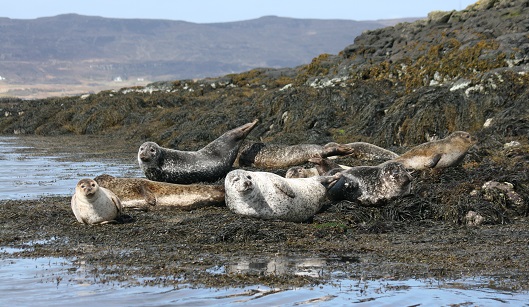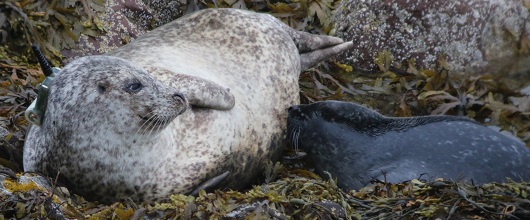‘Inner city’ seals may suffer hearing loss

Seals may experience hearing loss from underwater vessel noise, according to new research from the University of St Andrews.
The study, led by ecologist Esther Jones, compares seals inhabiting the UK’s busy shipping lanes to humans living in noisy cities.
In a new paper published by the Journal of Applied Ecology, the St Andrews researcher says the noise can affect how sea mammals such as whales, dolphins and seals find food and communicate with each other.
Dr Jones, a Research Fellow in the University’s Centre for Research into Ecological and Environmental Modelling (CREEM), said: “Like humans living in busy, noisy cities, some seals live in areas where there is a lot of shipping traffic and associated noise. The UK has some of the busiest shipping lanes in the world, and underwater noise has been increasing over the last 30 years.”
The St Andrews team developed maps showing the levels of risk of exposure to vessel traffic for grey and harbour seals around the UK.
The researchers found that 11 out of 25 Special Areas of Conservation (SACs) associated with seals had a high risk of overlap between seals and shipping.
Dr Jones explained: “This is particularly pertinent to harbour seals that are declining in some regions around the UK, as half of SACs associated with them had a high risk of exposure to shipping. Exposure risk was highest within 50km of the coast, and any impacts will have the greatest effect on harbour seals as they generally stay close to land.”
The team then investigated the underwater noise levels generated by vessels that individual animals were exposed to in the Moray Firth, on the north-east coast of Scotland, using predictive acoustic noise models.
For 20 out of the 28 animals observed in the study, the levels of predicted noise were high enough that temporary hearing loss could occur (termed Temporary Threshold Shift, or TTS). Predictions from the acoustic models were compared to measurements from sound recorders to verify their accuracy.
Although there was no evidence that seals were exposed to ship noise levels high enough to cause permanent hearing damage, some sites were sufficiently noisy that seals living there could experience TTS in hearing ability.
Dr Jones continued: “Urbanisation of the marine environment is inevitably going to continue, so chronic ocean noise should be incorporated explicitly into marine spatial planning and management plans for existing marine protected areas.”

Researchers from the University of St Andrews are now deploying high resolution sound and movement tags (DTAGs) to investigate the total noise exposure of individual seals, and their subsequent behaviour.
Dr Jones concluded: “We now need to begin assessing any behavioural changes of seals as a result of chronic exposure to underwater noise, so that we can understand the implications of those changes on individuals and ultimately on population dynamics.”
All images © Monica Arso Civil at SMRU
Background information
Visit the Applied Ecologist’s blogpost outlining the findings of the paper for more information.
Issued by the University of St Andrews Communications Office, contactable on 01334 467310/2530 or [email protected].
Category Research